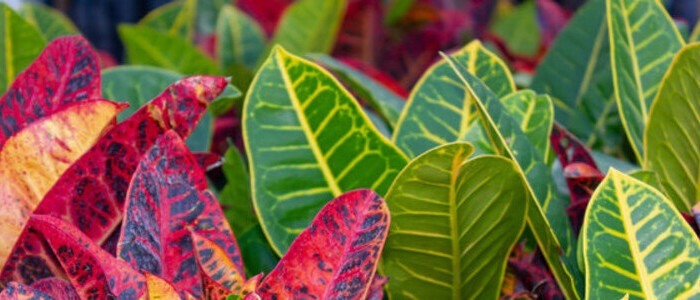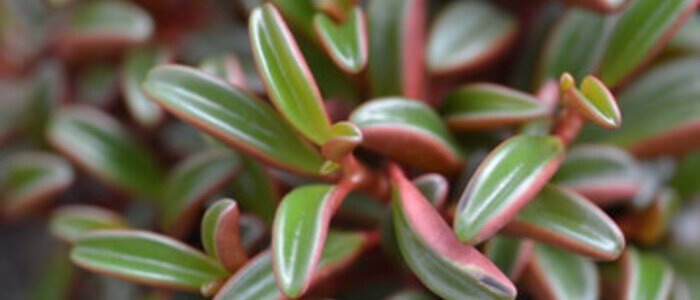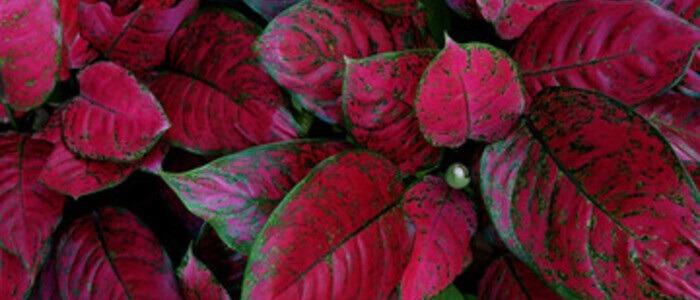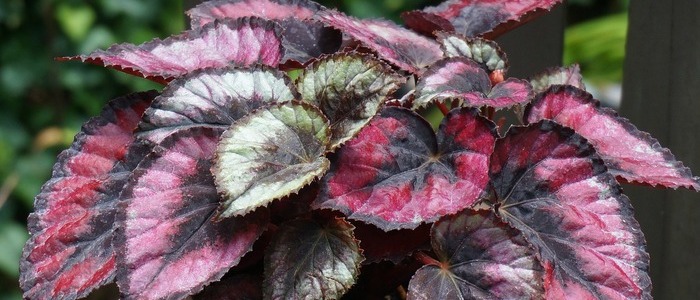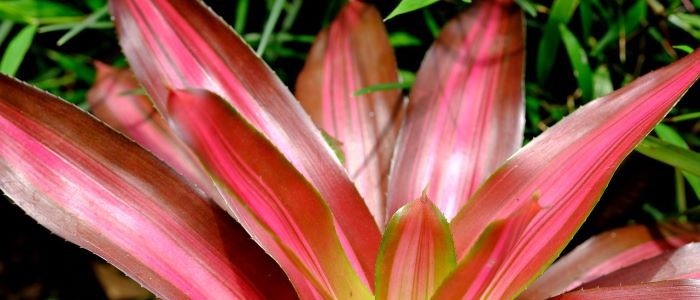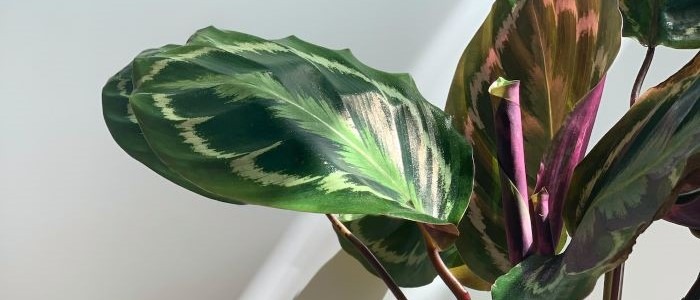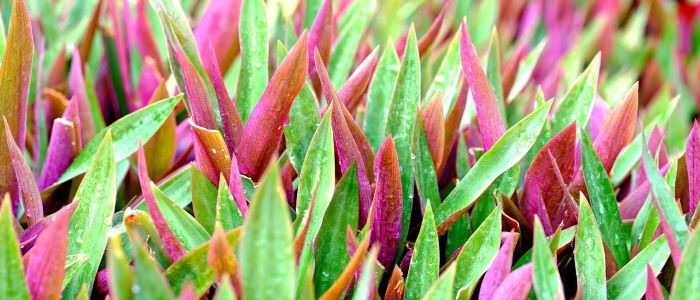Crassula ovata, commonly known as the Jade plant, is an evergreen succulent native to South Africa. However it has been popular in Asian culture for centuries,. The jade plant has long been associated with luck and fortune when cared for properly. This slow-growing succulent can live for many decades and make a beautiful addition to any home or office space.
The jade plant comes in many varieties, from dark green to variegated colors. The leaves are oval-shaped and typically range in size from 0.5 inches to 3 inches long. Depending on its environment, the jade plant can grow up to two feet tall and three feet wide.
When growing a jade plant it is important that proper care is given to it. So that it may thrive and bring good luck and fortune for many years. Choosing a well-lit spot away from direct sunlight is ideal, on the other hand, too much shade will cause the leaves to become dull and yellowish-brown in color. It should be watered regularly and lightly fertilized each month during its active growing season (spring through fall).
For best results it is important not to use regular potting soil as this will retain too much water. It is better to use a specialized mix made of equal parts peat moss, sand/perlite, and coarse composted bark chips/granules. This will allow water drainage while still providing enough nutrients for your jade plant’s growth.
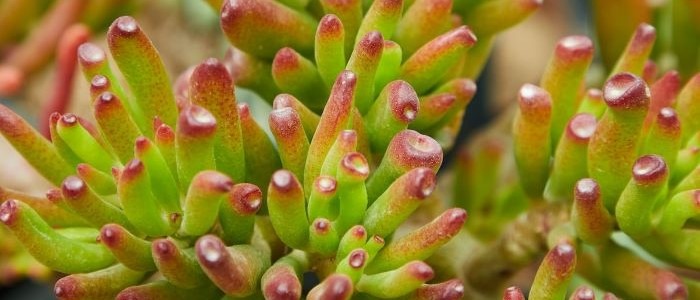
Crassula Ovata Plant Frequently Asked Questions
Does Crassula ovata need direct sunlight?
Yes, Crassula ovata, commonly known as the jade plant, requires direct sunlight to thrive. Being a succulent, it is adapted to bright and sunny conditions. Placing it in a location where it receives at least six hours of direct sunlight per day will ensure healthy growth and vibrant foliage. However, it is important to monitor the plant closely and provide some shade during extremely hot summer days to prevent sunburn.
What are some of the other names of Crassula ovata?
Some of the other names for Crassula ovata include the Jade plant, Money plant, Friendship tree, and Lucky plant. These common names are often used interchangeably to refer to this popular succulent species. Regardless of the name, Crassula ovata is known for its thick, fleshy leaves and its symbolism of prosperity and good luck.
Choosing The Right Soil and Container for Crassula Ovata
Choosing the right container and soil for your Crassula ovata is essential to its long-term health and growth. The size of the container should be appropriate for the size of the plant. A pot that’s too small won’t allow adequate root growth, while one that’s too large can cause problems with water retention.
The best way to choose a pot for your jade plant is to select one that’s just slightly larger than its current size. It must also have a drainage hole to prevent water logging. To ensure good drainage, use a well-draining soil mix with cactus or succulent potting soil, and add perlite or pumice for added aeration. This combination will provide enough moisture without allowing the roots of your jade plant to sit in standing water. Be sure to incorporate slow-release fertilizer into the mix as well.
This will provide your jade plant with the necessary nutrients it needs for optimal growth. When you are replanting your jade plant in its new container, make sure you don’t pack down the soil too tightly around its roots. Doing so could damage them and inhibit proper oxygen flow.
Finally, avoid using any type of clay pots or containers; these can absorb water from the soil. This can lead to root rot in succulents like Crassula ovata.
How to Provide Adequate Light for Crassula Ovata
One of the most important aspects when caring for Crassula ovata, is making sure that your succulent gets enough light. This evergreen succulent loves bright, indirect light and should be placed near an east or west-facing window. Not providing enough light can cause the leaves to drop off and slow down its growth rate.
However, it’s important not to place your jade plant in direct sunlight, as this may result in scorched leaves. If you do need to move the plant, try to do so gradually over a few days, giving it time to adjust to the new light conditions. During the winter months you may need to supplement natural sunlight with artificial lighting. This can be for a few hours a day if your jade plant isn’t getting enough natural light.
It’s also wise to rotate your jade plant every few weeks so that all sides get equal exposure from the sun or other sources of lighting.
This will help ensure that all the stems and leaves grow evenly and have an even coloration. With proper care and attention, your Crassula ovata will bring luck and fortune for many years to come!
How to Propagate the Crassula Ovata Plant
Propagating Crassula ovata (the Jade plant) is a great way to increase your collection and ensure its longevity. There are two main methods of propagation – stem cuttings and leaf cuttings. With the right soil mix and knowledge, you can easily propagate your own Jade plant.
Stem Cuttings: To begin propagating your Jade plant with stem cuttings, select a healthy stem from an established mother plant. Cut it at least 1-2 inches below a leaf node (where leaves grow from), then remove all but the top most leaves.
Dip the cutting in rooting hormone for best results and place it in a pot filled with well-draining soil. Place the pot in bright indirect light or under artificial lighting as needed. Water lightly every few days until roots form at the base of the cutting. Once roots have formed, stop watering and wait until new growth appears; this usually takes about four weeks.
Leaf Cuttings: To propagate your the Jade plant with leaf cuttings, select healthy leaves from an established mother plant. Gently remove them by twisting them off at their base rather than pulling them off so as not to damage any other parts of the mother plant.
Dip each leaf in rooting hormone for best results and place them on top of well-draining succulent or cactus mix soil. This soil mix should have been mixed with perlite or pumice for added aeration.
Place the pot in bright indirect light or under artificial lighting as needed and water lightly every few days. This should be done until new growth appears at the base of each leaf; this usually takes four to six weeks depending on conditions.
Once you see new growth emerging from each leaf cutting, stop watering completely until they are firmly rooted into their pots. This usually takes another few weeks to one month before they’re ready to be transplanted into larger pots.
.
Tips for Watering, Fertilizing and Pruning Crassula ovata
When it comes to watering Crassula ovata (the Jade plant), patience is key. This slow-growing succulent needs a careful balance of water and air. The soil should be moist, but not soggy – overwatering can lead to root rot.
You may water your Jade plant thoroughly every two weeks with room temperature water in the summer. It is wise to water less frequently in the winter months. To test if it’s time to water your plant, stick your finger into the soil an inch or two deep; if it’s dry, then it’s time to water again.
Fertilizing is also important for maintaining healthy growth of your Jade plant. Apply a balanced fertilizer once a month during the spring and summer months. Avoid fertilizing during the winter months as succulents are sensitive to cold temperatures. They can suffer from nutrient burn due to excessive fertilizer application when temperatures drop below 50°F.
Pruning is necessary for maintaining the shape of your Jade plant and encouraging new growth. If you notice any dead leaves or branches, remove them by cutting off at their base with sharp scissors or pruners. Avoid pulling them off as this could damage other branches or leave marks on the stem of the plant. Pruning should be done carefully and sparingly – too much pruning can stunt its growth or even kill it altogether!
Problems and Solutions When Growing Crassula Ovata
The evergreen Jade plant, also known as Crassula ovata, is not exempt from common pests such as mealybugs, scale and spider mites. To protect your money tree from infestation, it is important to identify the problem quickly and take appropriate action.
Mealybugs can be removed with a cotton swab or cloth dipped in rubbing alcohol while scale insects should be treated with insecticidal soap spray. Spider mites require neem oil or an insecticidal spray for effective elimination.
Another issue that may arise due to incorrect environmental conditions is discoloration of leaves. This can be caused by overexposure to sunlight or too much moisture in the soil. If this occurs, move your Jade plant to an area that receives bright indirect light instead of direct sunlight. And make sure to check the soil moisture level frequently before watering again.
Flowering can also occur but requires specific environmental conditions such as cool temperatures (at least 10°C/50°F) . And bright light without direct sun exposure during winter months. To encourage blooming, keep your Jade plant away from heaters and cold drafts. You should also provide adequate humidity by misting it regularly with water. With proper care you will enjoy clusters of star-shaped flowers throughout winter!
Conclusion
In conclusion, caring for a Crassula ovata is an easy and rewarding endeavor. With the right pot, soil, and care, this slow-growing evergreen succulent can bring good luck and fortune to your home for many years.
To get the most out of your Jade plant, be sure to propagate with stem cuttings or leaf cuttings and fertilize with a balanced fertilizer during the summer months. Additionally, it is important to water consistently but not excessively; prune carefully and sparingly; maintain proper temperature, light, and humidity levels. You must always be aware of common pests such as mealybugs, scale, spider mites that can damage your jade plant.
With careful attention and the right conditions, you will be able to enjoy your jade plant’s beauty for many years to come!
Other Multi Color House Plants

